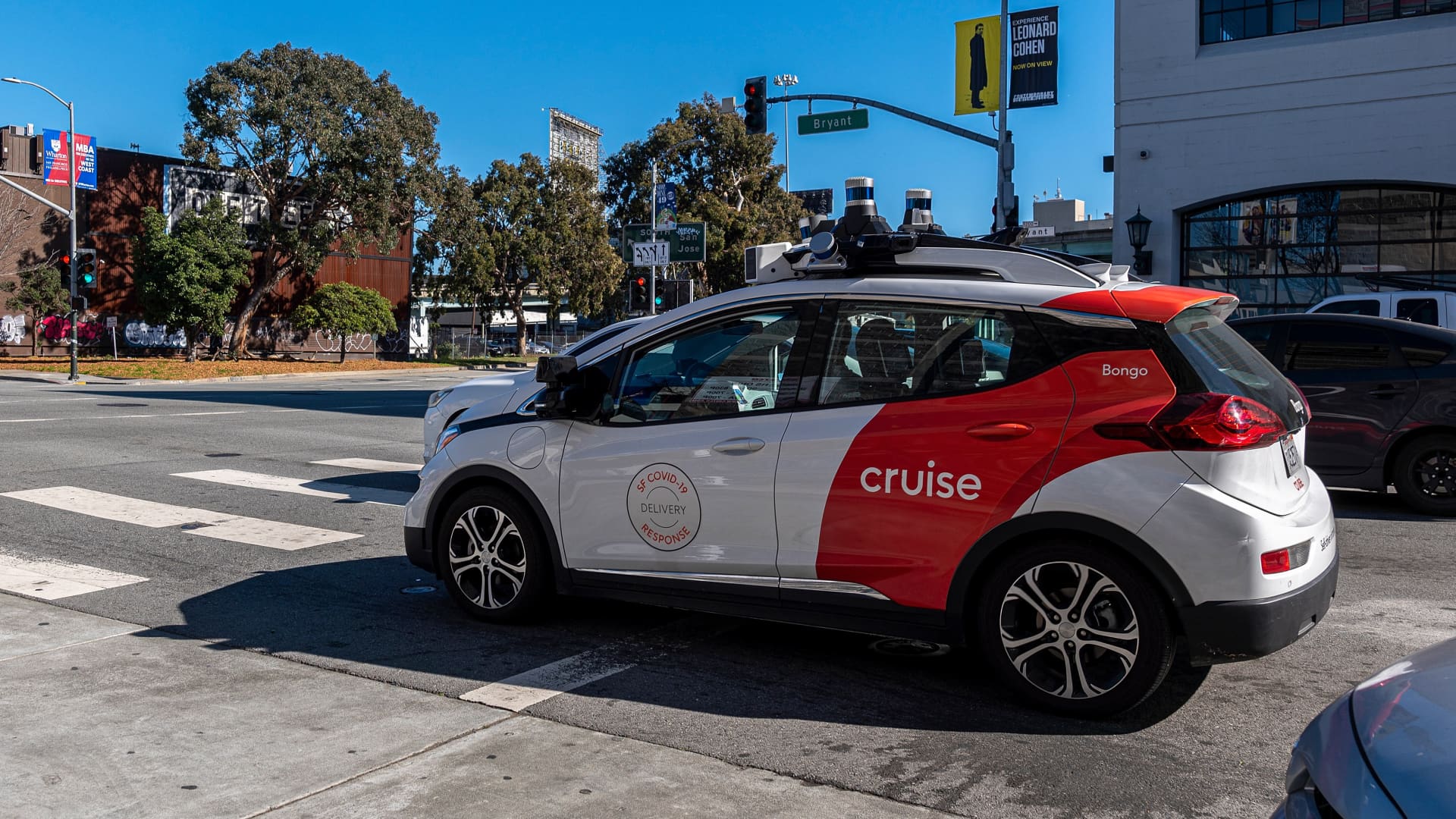A Cruise vehicle in San Francisco on Feb. 2, 2022.
David Paul Morris | Bloomberg | Getty Images
General Motors’ Cruise self-driving vehicle unit will redeploy cars on U.S. roadways for the first time since October, beginning with a small fleet of human-driven vehicles in Phoenix, the company said Tuesday.
The relaunch comes after the company ceased operations weeks after an Oct. 2 accident in which a pedestrian in San Francisco was dragged 20 feet by a Cruise robotaxi after being struck by a separate vehicle.
The redeployed vehicles will not operate as they previously did â as robotaxis â but will “create maps and gather road information in select cities, starting in Phoenix,” the company said.
Cruise said its “goal is to resume driverless operations,” however it did not provide a timeline for doing so. It also did not provide a timetable to expanding human-driven vehicles to other cities.
The company called the relaunched fleet with human drivers “a critical step for validating our self-driving systems as we work towards returning to our driverless mission.”
“In October 2023, we paused operations of our fleet to focus on rebuilding trust with regulators and the communities we serve, and to redesign our approach to safety,” Cruise said in a blog post. “We’ve made significant progress, guided by new company leadership, recommendations from third-party experts, and a focus on a close partnership with the communities in which our vehicles operate. We are committed to this improvement as a continuous effort.”
A third-party probe into the October incident and subsequent fallout, which was ordered by GM and Cruise, found culture issues, ineptitude and poor leadership were at the center of regulatory oversights that led to the accident. The probe also investigated allegations of a coverup by Cruise leadership, but did not find any evidence to support those claims.
Cruise said in January that it “accepts” the conclusions found in the report. The San Francisco-based company, of which GM owns about 80%, said it will “act on all” recommendations and is “fully cooperating” with investigations by state and federal agencies following the Oct. 2 accident.
The company said in January that investigations or inquiries into the incident included those by the California DMV, California Public Utilities Commission, National Highway Traffic Safety Administration, U.S. Department of Justice and U.S. Securities and Exchange Commission.
Prior to the accident, Cruise was planning an aggressive expansion of robotaxis outside its home market, where the majority of its vehicles operated.
In addition to the ceasing of operations, Cruise leadership has been gutted: Its cofounders, including CEO and cofounder Kyle Vogt, resigned and nine other leaders were ousted. And the venture laid off 24% of its workforce, as well as a round of contractors.
Read the original article here



